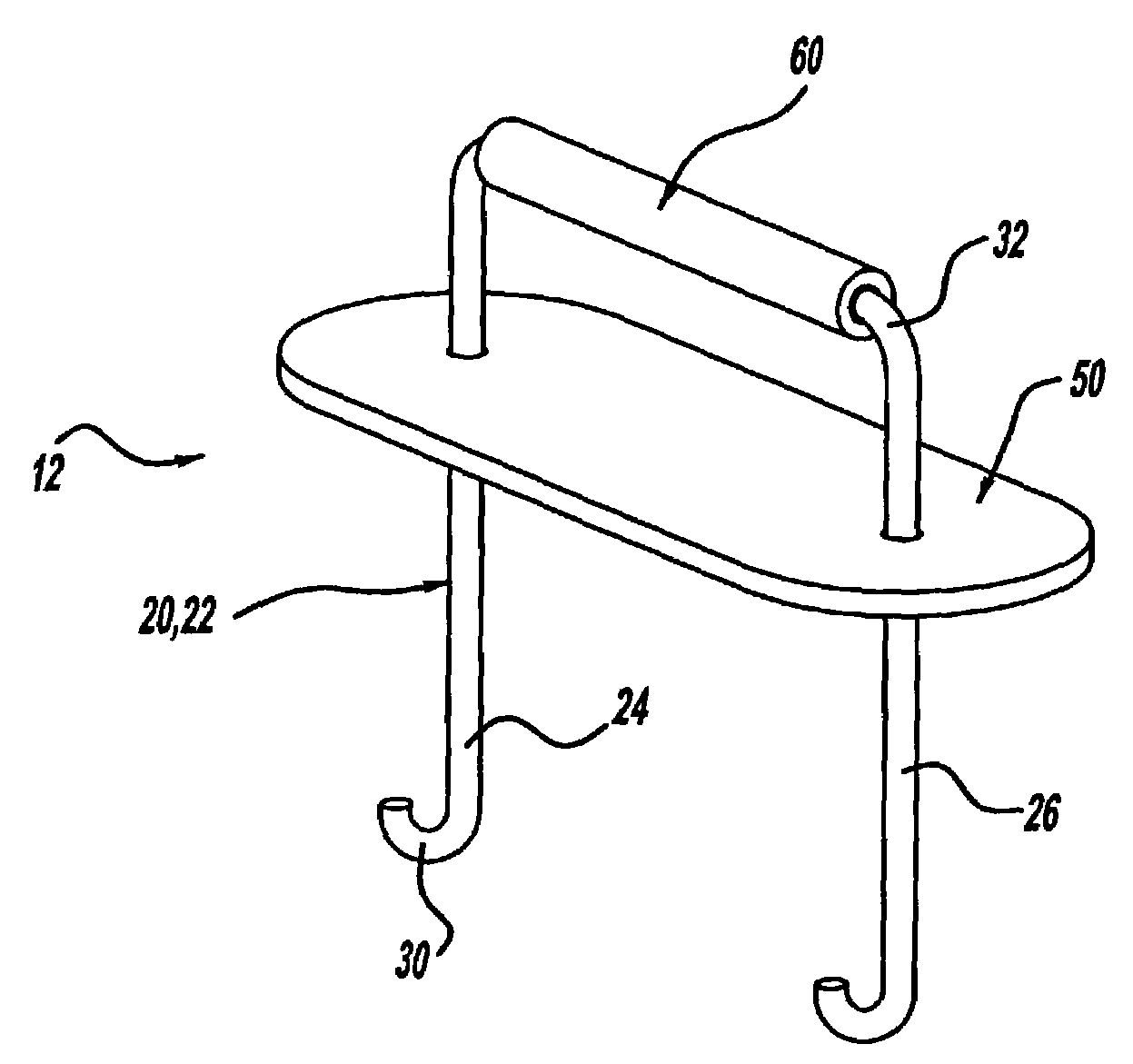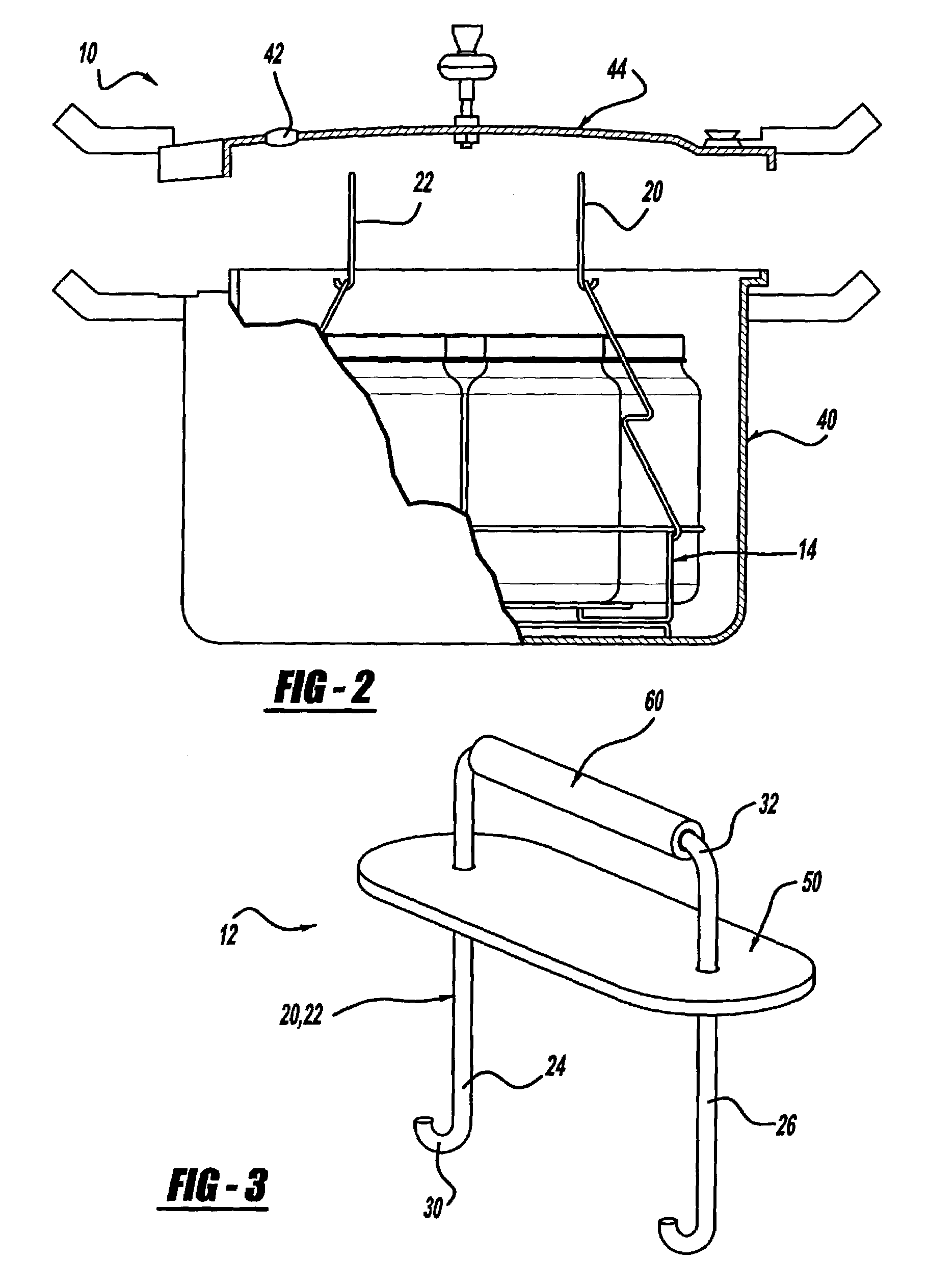Canning rack utensil
a technology for canning racks and utensils, applied in the field of canning racks, can solve the problems of botulinum spores being very difficult to destroy, affecting the quality of canning racks, so as to facilitate manipulation and remove safely. the effect of placing and removing
- Summary
- Abstract
- Description
- Claims
- Application Information
AI Technical Summary
Benefits of technology
Problems solved by technology
Method used
Image
Examples
Embodiment Construction
[0018]The following description of the preferred embodiment(s) is merely exemplary in nature and is in no way intended to limit the invention, its application, or uses.
[0019]Typical boiling-water canning pots and pressure canning pots are designed to hold seven quart jars or eight to nine pint jars. Small pressure canning pots hold as few as four quart jars and some large pressure canning pots hold as many as eighteen pint jars. As explained above, while low-acid foods must be processed in a pressure canning pot to be free of botulism risks, pressure canning pots may also be used for processing acid foods. Boiling-water canning pots, however, are typically recommended for this purpose because they are faster. With either type of canning pot, high temperature water is required.
[0020]Boiling-water canning pots are made of aluminum or porcelain-covered steel and have removable perforated racks and fitted lids. The canning pot must be deep enough so that at least one inch of briskly boi...
PUM
 Login to View More
Login to View More Abstract
Description
Claims
Application Information
 Login to View More
Login to View More - R&D
- Intellectual Property
- Life Sciences
- Materials
- Tech Scout
- Unparalleled Data Quality
- Higher Quality Content
- 60% Fewer Hallucinations
Browse by: Latest US Patents, China's latest patents, Technical Efficacy Thesaurus, Application Domain, Technology Topic, Popular Technical Reports.
© 2025 PatSnap. All rights reserved.Legal|Privacy policy|Modern Slavery Act Transparency Statement|Sitemap|About US| Contact US: help@patsnap.com



